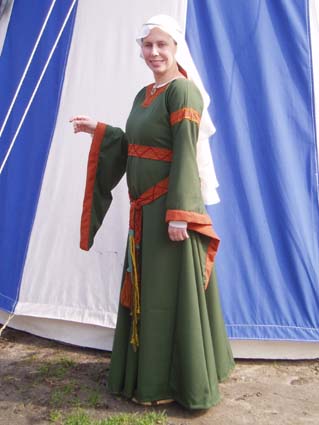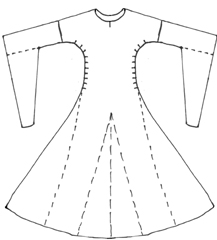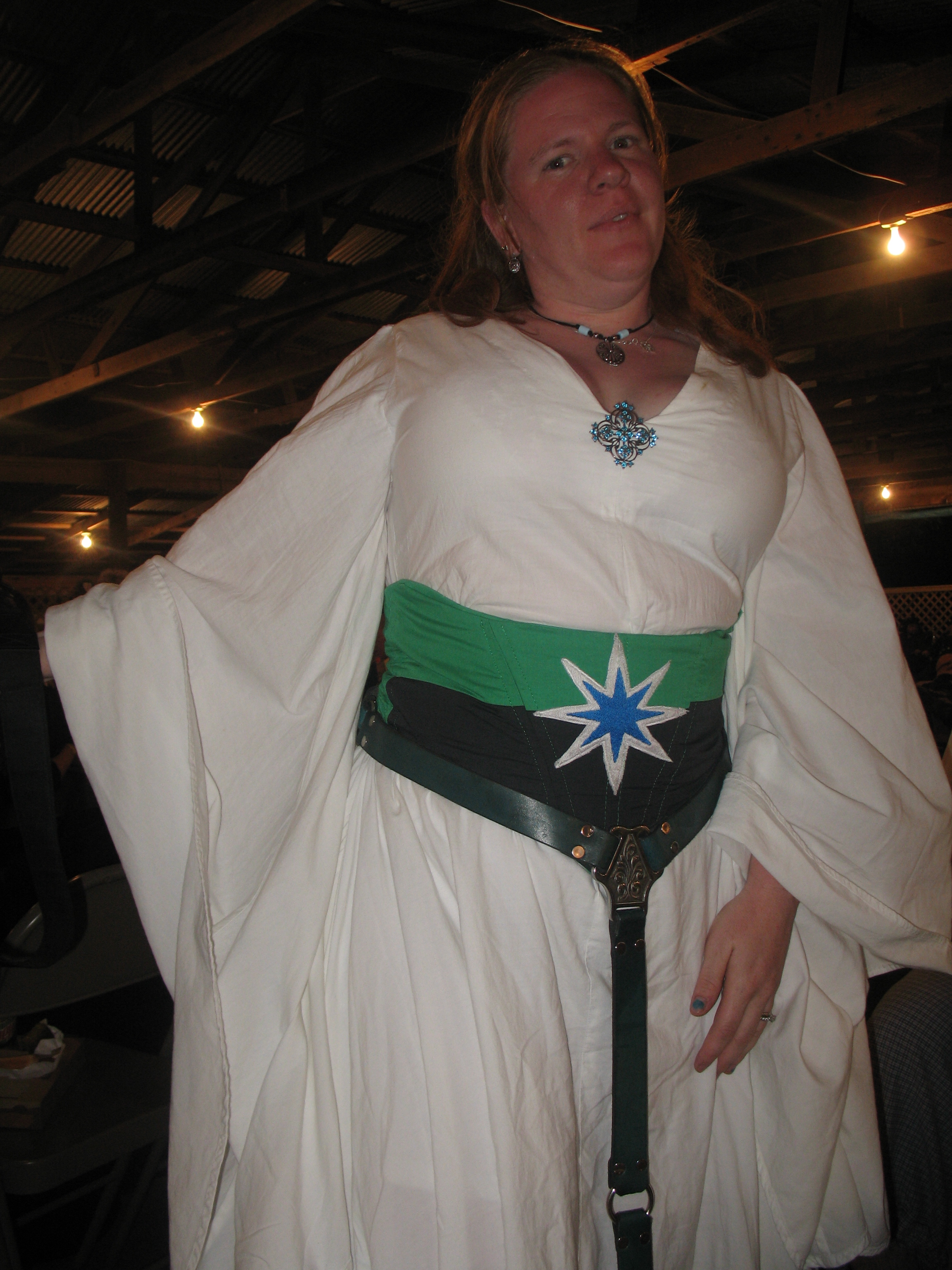Bliaut

The bliaut is an over-garment worn in 11th to 13th century Europe, usually seen on women. It features sleeves that begin very narrow near the shoulders, but become nearly floor-length toward the wrists.
In history
The garment now known as the lady's bliaut is a product of the mid to late twelfth century, although it is clearly descended from similar gowns worn in the eleventh and early twelfth centuries. It appears to have been worn wherever French culture reached at the time, from England to the Crusader states. The best and most famous examples of the bliaut in period artwork are the statue-columns at Chartres Cathedral, made from about 1145 to 1155 C.E.. It was clearly a fashionable gown worn by the nobility and royals, although lower-class versions of the gown are also represented in artwork of the period.
It is not known what fabrics were used at this time to make bliauts, although wool, linen, and silk were the three main possibilities in Europe at this time. Written works of the time make it appear certain that the preferred fabric for a fashionable bliaut was silk, although other fabrics were likely used as well, especially by those who could not afford the expensive silken fabrics.
Belts are not described as worn with the bliaut, but the artwork shows patterned bands coordinating with the gown's trim, wrapped twice around the wearer's waist. Long cords are attached at each of the ends and are tied together before being allowed to hang to the wearer's calves, often with decorative knots along their length.
In Amtgard
Wide sleeves are rather fashionable for court garb, often on a dress.

